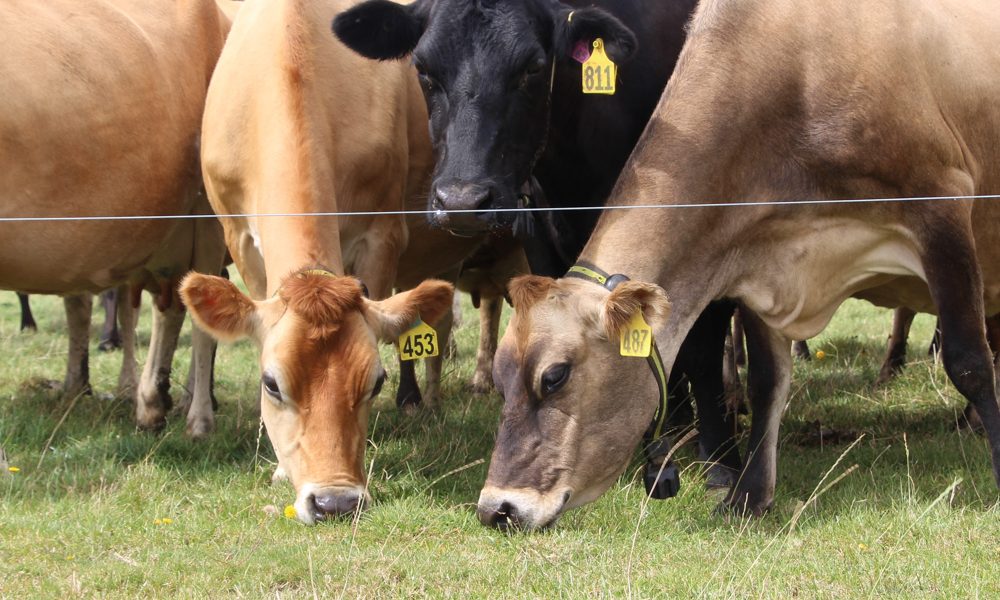
Fully feeding your cows to improve their milk-producing performance, while simultaneously keeping them healthy, is about maintaining a consistent diet throughout the season.
‘Consistent’ means feeding them optimum levels of dry matter, energy, protein, fibre, minerals, and vitamins up to their levels of production, but it also involves avoiding sudden changes in the diet composition. In New Zealand systems this becomes a challenge, as pasture represents a large proportion of the diet and its quality changes throughout the season
It is well recognised that, as the season moves to late summer, animal performance drops, whether it is in milk production or cows’ condition or both. The dry matter content changes, due to drier conditions and greater maturity of pastures with warmer temperatures. This means a drop in carbohydrates, protein, metabolisable energy (ME) and digestibility.
When we speak about quality pasture, we refer to a pasture that provides the cows with the required nutrients, and this not only means having ‘enough’ nutrients, but it also means not having ‘too many’.
This last season showed us that this change in quality also varies from year to year, so using generic tables that indicate how much energy the pasture will give us throughout the year may not be the best approach when planning your cows’ diet. This past summer had many cloudy days, and our pasture quality was affected by the capacity of the pasture to photosynthesise being limited, and, consequently, the dry matter content and sugar levels on the leaf dropped.
One of the tools we use every time we visit a farm as a part of our pasture assessment is the Brix (°Bx) of grass. In simple words, the Brix% measures the percentage of sugars in the leaf, and this will be influenced by weather, soil moisture, level of fertilisation (especially N applications), pasture management and even time of the day that the sample is taken.
Even though we find Brix% is a good tool to measure pasture quality, it cannot be taken in isolation, and a complete assessment is essential, mainly focusing on what the cows are ‘telling us’. But coming back to this past summer season, we tested grass almost every day on different farms. From November until the end of April, we found very low Brix% levels (from 3 to 7%), which is totally different from what we saw over previous seasons on the same farms. We normally see good conversion efficiencies (from grass proteins to milk proteins) when this percentage is around 10 to 12%, so this could partly explain why many farms were below production targets last season.
When we speak about quality pasture, we refer to a pasture that provides the cows with the required nutrients, and this not only means having ‘enough’ nutrients, but it also means not having ‘too many’. I refer more specifically to the protein levels in pasture at some stages of the year because the amount of carbohydrates at those times is not enough to match with the excess protein, and to get rid of this protein, the cows need to call on energy reserves that are already low.
There is research indicating that reducing protein levels (either balancing them with supplements or reducing them through different pasture variety mixes) could have positive effects on the cows’ performance and in the environment (reduced losses through urine). We believe it is necessary to take up the challenge of discussing these issues.
Finally, I would like to highlight the importance of including a source of effective fibre in the diet. When I say effective fibre, I refer to the long-chopped roughage that stimulates rumination and saliva production to maintain the pH in the rumen. The positive part played by fibre in maintaining rumen health and preventing different issues like lameness and sub-acute rumen acidosis is now well known.
We are encouraging our clients to do regular herbage testing of their paddocks. This is a powerful method for allowing us to know not only energy, protein and dry matter percentage but also macro and micro minerals’ content. This is valuable information in relation to the soil fertility status.
At the Centre for Dairy Excellence, we believe that animal nutrition must be taken from a dynamic approach. This means periodically assessing what is happening on farm regarding pasture quality and feed quality in general, and then adjusting the cows’ rations as many times as necessary to provide them with this consistent supply of nutrients and minerals through their diet.
This involves looking at the bigger picture and understanding how the nutrients move from the soil through the pasture then into the rumen, resulting in good efficiencies that will lead to achieving production targets with healthy cows.
For more information, contact the Centre for Dairy Excellence on 027 693 7664.